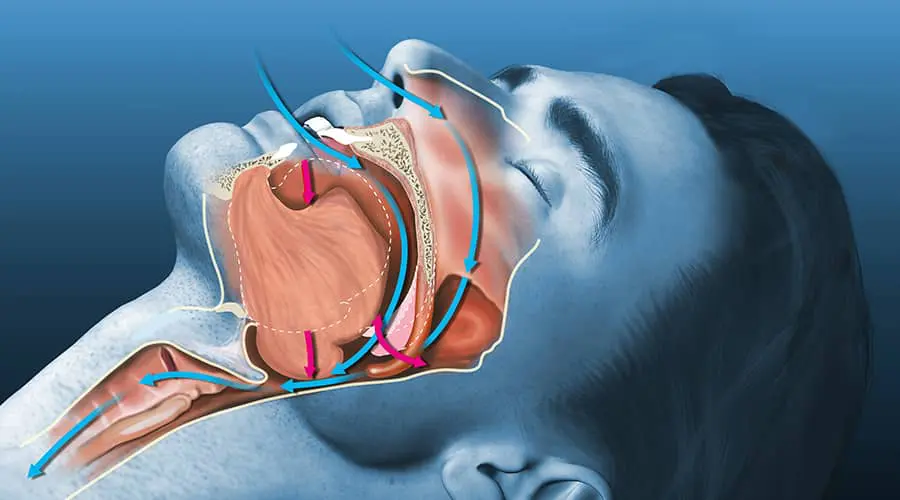
The Hidden Risk of Undiagnosed Obstructive Sleep Apnea in the Perioperative Period
Ali Araghi, MD.
BC Internal, Pulmonary, Sleep, Critical Care & Obesity Medicine
Obstructive sleep apnea (OSA) is a common sleep disorder characterized by repeated episodes of partial or complete upper airway obstruction during sleep. Despite its prevalence, OSA often remains undiagnosed, posing significant risks to patients undergoing surgery. In the perioperative period, undiagnosed OSA can lead to serious complications, making it crucial for general surgeons to be aware of these risks and implement appropriate management strategies.
Prevalence and Diagnosis
The prevalence of OSA in the general population is estimated to be between 2% and 25%, but it is significantly higher in patients undergoing elective surgery1. Unfortunately, up to 80% of patients presenting for surgery may have undiagnosed OSA2. This underdiagnosis is partly due to the lack of symptoms in many patients; more than half of those with moderate to severe OSA do not report excessive daytime sleepiness, a common symptom of the disorder.
Perioperative Complications
Patients with undiagnosed OSA are at an increased risk of perioperative complications. These include hypoxemia, pneumonia, difficult intubation, myocardial infarction, pulmonary embolism, atelectasis, cardiac arrhythmias, and unanticipated admission to the ICU1. The risk of cardiopulmonary complications is particularly elevated, with untreated OSA associated with a twofold to threefold increased risk of complications such as unplanned reintubation and postoperative myocardial infarction2.
Impact on Surgical Outcomes
Studies have shown that patients with untreated OSA experience higher rates of postoperative complications compared to those receiving preoperative continuous positive airway pressure (CPAP) therapy. For instance, CPAP therapy has been associated with a reduction in postoperative respiratory complications and unplanned ICU admissions5. Moreover, untreated OSA can lead to longer hospital stays and increased healthcare costs1.
Management Strategies
To mitigate these risks, the American Society of Anesthesiologists (ASA) recommends preoperative screening for OSA using tools like the STOP-Bang questionnaire3. Patients identified as being at high risk should be managed with caution, including the use of CPAP therapy before surgery if possible. Postoperative care should include careful monitoring, appropriate analgesia strategies to minimize respiratory depression, and positioning to reduce airway obstruction3.
Conclusion
Undiagnosed OSA poses significant risks in the perioperative period, emphasizing the need for general surgeons to be vigilant about this condition. Early identification and appropriate management can significantly reduce the risk of complications and improve patient outcomes. As the prevalence of OSA continues to rise, incorporating OSA screening into preoperative assessments is essential for providing safe and effective surgical care.
References:
1-Vasu TS, Grewal R, Doghramji K. Obstructive sleep apnea syndrome and perioperative complications: a systematic review of the literature. J Clin Sleep Med. 2012;8(2):199-207. Published 2012 Apr 15. doi:10.5664/jcsm.1784
2-Abdelsattar ZM, Hendren S, Wong SL, Campbell DA Jr, Ramachandran SK. The Impact of Untreated Obstructive Sleep Apnea on Cardiopulmonary Complications in General and Vascular Surgery: A Cohort Study. Sleep. 2015;38(8):1205-1210. Published 2015 Aug 1. doi:10.5665/sleep.4892
3-Fahlenkamp A, Rossaint R, Coburn M; American Society of Anesthesiologists Task Force. Perioperatives Management von Patienten mit obstruktiver Schlafapnoe : Update der Praxisleitlinien der American Society of Anesthesiologists Task Force [Perioperative management of patients with obstructive sleep apnea : update on the practice guidelines of the American Society of Anesthesiologists Task Force]. Anaesthesist. 2014 Jun;63(6):511-3. German. doi: 10.1007/s00101-014-2338-3. PMID: 24851836.
4-Chan MTV, Wang CY, Seet E, et al. Association of Unrecognized Obstructive Sleep Apnea with Postoperative Cardiovascular Events in Patients Undergoing Major Noncardiac Surgery. JAMA. 2019;321(18):1788–1798. doi:10.1001/jama.2019.4783
5-Chaudhry RA, Zarmer L, West K, Chung F. Obstructive Sleep Apnea and Risk of Postoperative Complications after Non-Cardiac Surgery. J Clin Med. 2024;13(9):2538. Published 2024 Apr 26. doi:10.3390/jcm13092
